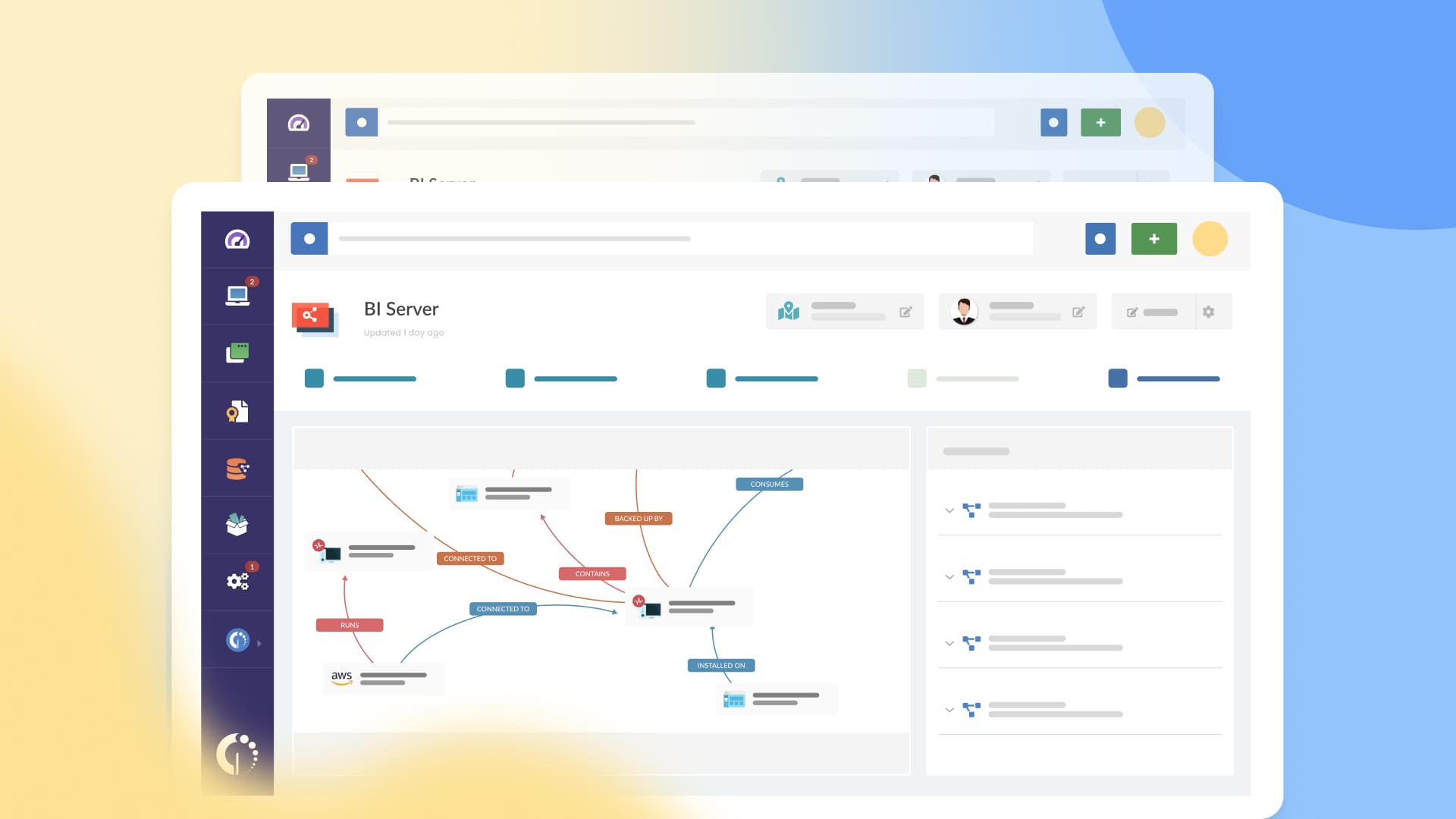There are many IT Inventory Management challenges. And the first one is assuming they’re the same as traditional inventory problems. Sure, there’s some overlap, but managing IT assets is a whole different story.
We know this because we’ve helped hundreds of organizations bring clarity to their IT environments with InvGate Asset Management. From missing laptops to shadow IT and scattered software licenses, the hurdles are real — but (here’s the good news) they’re also manageable with the right approach.
In this article, we’ll break down the most common IT Inventory Management challenges and show you how to overcome them.

10 IT Inventory Management challenges
IT Inventory Management comes with a unique set of hurdles. To make things clearer, we’ve organized them in a logical sequence — starting with visibility issues, moving through tracking and ownership gaps, and ending with the broader risks they create.
Let’s take a closer look at each challenge and how it impacts your ability to manage IT assets effectively.
1. Limited visibility into assets
This is the root of most IT inventory issues. If you can’t see all your assets — hardware, software, cloud services, and other IT resources — then you’re basically flying blind.
IT teams often deal with fragmented environments, where some devices are tracked in spreadsheets, others in emails, and many… not at all. That lack of central visibility makes it hard to make smart decisions, plan purchases, or respond to incidents.
The result? Lost assets, unnecessary spending, and a whole lot of guesswork.

2. Inaccurate or outdated data
Even if you think you have everything documented, that doesn’t mean the data is reliable. Maybe the laptop is still listed as active, but the employee left months ago. Or the software version in your records doesn’t match what’s actually installed.
These gaps usually happen when inventory updates depend on manual input or disconnected systems. And once the data is wrong, every decision that follows (from renewals to replacements) is built on shaky ground.
3. Inconsistent asset tracking
Asset tracking sounds simple, until you have dozens (or hundreds) of devices moving between users, departments, or even countries.
Without a clear, standardized process to log these changes, assets get reassigned or relocated without leaving a trace. Over time, your records stop matching reality, and IT teams are left guessing where things are or who’s using them. And when something breaks, disappears, or needs replacing, it becomes a scavenger hunt.
4. Shadow IT and unknown devices
Not every asset goes through the front door. Employees often bring their own devices, install unauthorized tools, or connect to services without IT approval — and that’s where things get risky.
These untracked assets, also known as shadow IT, create blind spots in your inventory. They’re not maintained, monitored, or secured by your team, which means they can easily become entry points for data breaches or compliance issues.
If it’s not in your system, you can’t protect it. And in IT, what you don’t know can hurt you.
5. Unclear ownership and accountability
One of the most common issues in IT inventory? Not knowing who’s responsible for what. When devices are assigned informally (or not at all) it becomes nearly impossible to track usage, collect equipment during offboarding, or hold anyone accountable when something goes missing.
Clear asset ownership is about creating responsibility, improving traceability, and making sure every asset has a home.
6. Manual documentation
Let’s be honest — using spreadsheets for IT Asset Management is not a great idea. Still, many teams rely on them because they’re familiar and “good enough.”
But manual tracking is slow, error-prone, and hard to maintain. It doesn’t scale, it lacks automation, and it leaves too much room for things to fall through the cracks.
The more assets you manage, the clearer it becomes: you need a smarter system. The more assets you manage, the clearer it becomes: you need a smarter system.
7. Poor IT Lifecycle Management
IT assets aren’t forever. They go through different stages — from IT procurement to active use, maintenance, and eventually disposal.
But without clear IT Lifecycle Management, it’s easy to lose track of where each asset stands. Devices stay in use long after they should’ve been retired, warranties expire unnoticed, and unused equipment piles up in storage.
This leads to higher costs, more support issues, and a lot of wasted potential.
8. Lack of integration with other tools
Your inventory tool can’t live in a silo. If it doesn’t talk to your help desk, HR platform, procurement system, or identity provider, you’ll constantly be duplicating work — and probably missing key context. Disconnected systems mean more manual updates, more errors, and less visibility.
Integrations, on the other hand, help keep everything in sync and give you a fuller picture of each asset’s status, usage, and ownership.
9. Compliance and audit readiness
When an audit hits, you need to show exactly what assets you have, where they are, and how they’re being used.
If your inventory is incomplete or outdated, proving compliance becomes a nightmare — especially in industries with strict regulations.
Good IT Inventory Management isn’t just about staying organized. It’s about being able to demonstrate control, accountability, and security at any moment.

10. Security risks from unmanaged assets
Every untracked asset is a potential security threat. If it’s not in your inventory, it’s probably not being patched, monitored, or secured — and that makes it an easy target.
From rogue laptops to forgotten servers, unmanaged devices can become entry points for malware, data breaches, or unauthorized access.
How InvGate Asset Management helps overcome these challenges

The good news? You don’t have to tackle all these challenges manually. InvGate Asset Management is built to simplify and streamline every stage of IT Inventory Management — from discovery to retirement.
With an intuitive interface, multiple deployment options (cloud or on-premise), a powerful AI Hub, and a no-code approach to automation, our platform adapts to your environment — not the other way around.
Here’s how it helps:
- Centralized visibility – InvGate Asset Management helps you build a complete, centralized IT inventory by automatically discovering all hardware, software, and cloud assets — so nothing slips through the cracks.
- Accurate, real-time data – Keep your inventory up to date with automated tracking and data normalization, ensuring consistent, clean, and reliable asset information across the board.
- Standardized tracking and ownership – Assign assets to users, departments, or locations, and maintain detailed activity logs to track changes, transfers, and responsibilities over time.
- IT Lifecycle Management – Monitor every stage of your assets' lifecycle with automation rules for onboarding, maintenance, and retirement — reducing costs and extending hardware longevity.
- Automated documentation – Everything is logged and searchable in the system, making it easy to generate reports, track status, and stay audit-ready — no spreadsheets required.
- Integration-ready – Seamlessly integrates not only with InvGate Service Management, but also with other popular ITSM platforms and tools — so your asset data is always connected and consistent.
- Shadow IT detection – Spot unauthorized devices on your network through automated network scans and rule-based alerts, helping you uncover and act on hidden risks.
- Support for remote environments – Track and manage assets across hybrid or remote teams with full visibility and control, no matter where the devices are.
- Compliance made easy – Quickly demonstrate compliance with detailed audit trails, asset histories, and customizable reports tailored to regulatory requirements.
- Security alignment – By ensuring every asset is tracked and maintained, you reinforce your overall security posture and reduce exposure to unmonitored threats.
Final thoughts
IT Inventory Management comes with its own set of challenges. None of them are unbeatable. With the right tools and processes in place, you can go from scattered records and manual tracking to full visibility, accountability, and control.
InvGate Asset Management was built to do exactly that. Whether you’re dealing with remote teams, compliance pressure, or aging spreadsheets, our platform helps you take back control of your IT inventory in a way that’s simple, scalable, and smart.
Want to see it in action? Start your 30-day free trial and discover how easy IT Inventory Management can be.















